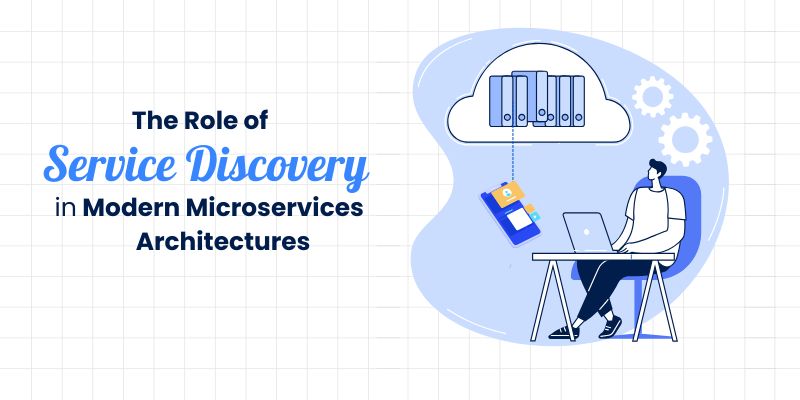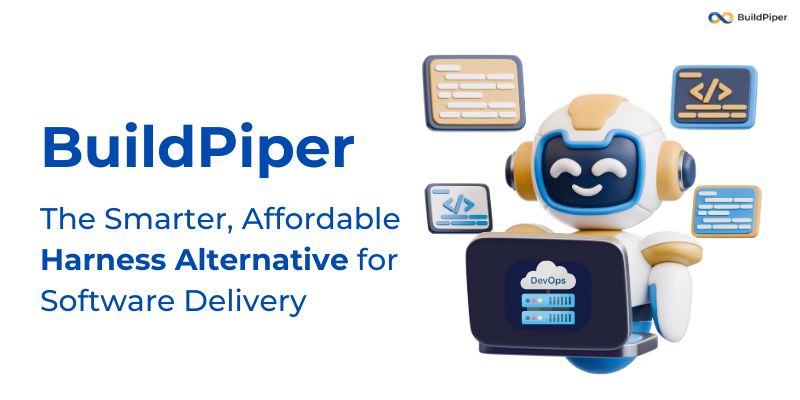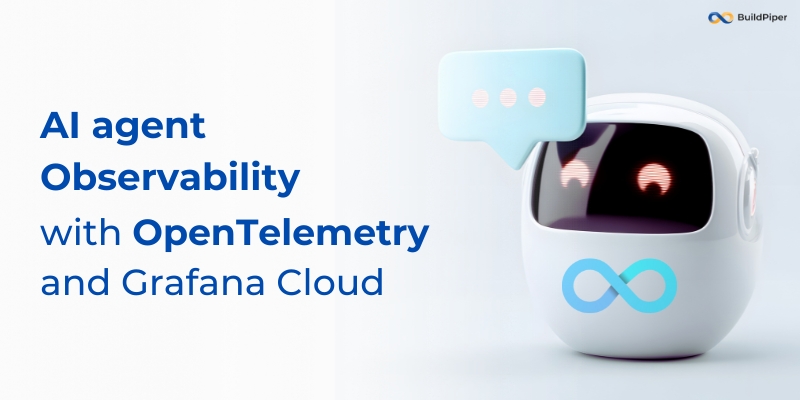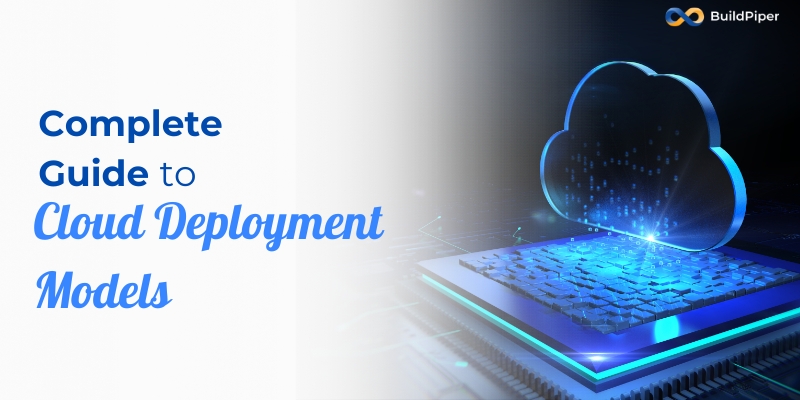In the fast-evolving world of software development, microservices architecture has gained immense popularity due to its flexibility, scalability, and modularity. Unlike monolithic applications, microservices enable independent development, deployment, and scaling of services. However, this distributed approach also brings challenges, particularly in how these independent services communicate and locate each other. Service discovery plays a pivotal role in overcoming these challenges.
Introduction to Microservices and Service Discovery
Microservices architecture structures an application as a collection of small, loosely coupled services, each focused on a specific task or feature. This allows teams to develop, deploy, and scale services independently. While the advantages of flexibility are clear, managing how these services communicate and discovering each other in a dynamic environment becomes a key challenge.
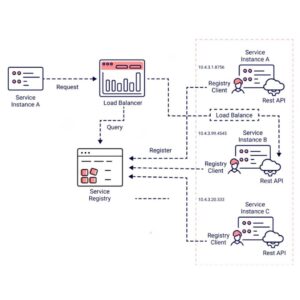
In traditional monolithic applications, all components live in the same process, making communication straightforward. However, microservices are distributed across different containers or machines, with frequently changing network locations (IP addresses and ports). As the number of services increases, manually managing these connections becomes impossible. This is where service discovery comes into play, automating the detection and location of services to ensure seamless communication across the architecture.
What is Service Discovery?
Service discovery is a mechanism that enables microservices to automatically locate and communicate with each other. In traditional setups, services needed to know the exact network location of every other service they interacted with, a cumbersome and error-prone process. In a microservices environment, where services are constantly being created, updated, or removed, this approach is inefficient.
Service discovery automates this process by registering services as they are deployed, updating locations dynamically, and allowing services to communicate without manual configuration. This makes microservice delivery more efficient and enables seamless scaling in dynamic environments.
Types of Service Discovery
There are two primary models for service discovery– client-side discovery and server-side discovery.
1. Client-Side Discovery
In client-side discovery, the client (the service making the request) is responsible for locating the target service. The client queries a service registry that maintains a list of all available services and their network locations. Once the client has the service information, it directly connects to it. A common tool that uses this model is Netflix Eureka.
2. Server-Side Discovery
In server-side discovery, the client sends a request to a load balancer or proxy, which then queries the service registry to find the appropriate service instance and forwards the request. This abstracts the discovery logic away from the client, making it simpler to implement but requiring more complex infrastructure. Tools like NGINX, Envoy, and Kubernetes often employ this model.
Both models have advantages depending on the system architecture and scale, making them widely adopted in modern microservices environments.
Importance of Service Discovery in Modern Architectures
In modern microservices, services are deployed dynamically and often on a scale. Managing how these services find and communicate with each other is crucial for building a resilient and scalable architecture. Here’s why service discovery is indispensable:
1. Scalability
As microservices environments grow, with hundreds or thousands of services, managing service locations manually is unfeasible. Service discovery tools automate this process, enabling services to register themselves and ensuring that others can easily find them, allowing seamless scaling without manual intervention.
2. Resilience
In distributed systems, failures—whether due to services going offline or network disruptions—are inevitable. Service discovery ensures resilience by routing requests only to healthy service instances. If a service fails, traffic is automatically rerouted to functioning services, minimizing downtime.
3. Automation
Microservices and DevOps infrastructure tools are built on the principle of automation, where manual processes are minimized. Service discovery fits into this philosophy by automating service registration, querying, and communication. This ensures a dynamic and adaptable system, reducing human errors.
4. Dynamic Environments
In cloud-native environments, services are frequently scaled up or down to meet demand. Static IP addresses and ports are insufficient in these scenarios. Service discovery ensures that even in highly dynamic environments, services can locate and communicate with each other seamlessly.
How Service Discovery Works
The core of service discovery is the service registry, a central database that tracks all available services, their instances, and their network locations (IP addresses and ports). When a service is launched, it registers itself with the service registry, making itself discoverable by other services.
The Workflow
Service Registration- When a service instance is deployed, it registers itself with the service registry. This includes its name, IP address, port, and metadata like version or health status. If a service instance shuts down, it deregisters itself, preventing traffic from being routed to it.
Service Querying- When a service needs to interact with another, it queries the service registry to find the target service’s location. Depending on the discovery model (client-side or server-side), the query may come from the client or be handled through a load balancer.
Health Checks- Many service discovery tools also include health checks, regularly monitoring service instances to ensure they are functional. Unhealthy services are removed from the registry to prevent routing traffic to them, enhancing system resilience.
Tools for Service Discovery
Various tools and protocols exist for implementing service discovery in microservices architectures:
DNS-Based Discovery- Platforms like Kubernetes use DNS-based discovery, where services register with DNS, and other services locate them via DNS queries. CoreDNS is a popular choice in Kubernetes for managing this process.
Consul- A widely used tool that provides service discovery, health checks, and key-value storage. Consul allows services to register themselves and gives real-time status information, making it a popular choice for microservice delivery.
etcd- A distributed key-value store commonly used in DevOps infrastructure tools for service discovery, configuration management, and coordination. It is a key component in Kubernetes, where it stores cluster states and configurations.
Netflix Eureka- A client-side discovery tool used extensively in cloud-native architectures, particularly within the Spring Cloud ecosystem. It allows for seamless service registration and communication.
Challenges of Service Discovery
While service discovery simplifies microservices communication, it introduces some challenges-:
Complexity in Large Systems
As the number of services increases, managing the service registry becomes more complex. Ensuring that services are properly registered, queried, and monitored can require careful configuration and management.
Performance and Latency
Frequent querying of the service registry can introduce latency and performance bottlenecks, particularly in high-traffic environments. Caching strategies can help mitigate these issues by reducing the frequency of queries to the registry.
Security
Allowing services to freely register and communicate can introduce security vulnerabilities. Securing the service discovery process, often through service meshes like Istio, is critical to prevent unauthorized access and protect communication between services.
Conclusion
Service discovery is a cornerstone of modern microservices architectures, providing the automation, scalability, and resilience required to manage the complexity of distributed systems. By implementing the right service discovery tools, organizations can ensure seamless communication between services, enabling efficient microservice delivery.
Best Practices
Ensure High Availability- The service registry is a critical infrastructure. It should be highly available and fault-tolerant to avoid system-wide disruptions
Use Health Checks- Regularly monitor service health to ensure that only healthy instances are receiving traffic, enhancing system reliability.
Secure Service Discovery- Implement security measures like mutual TLS (mTLS) and encryption to protect communication between services, especially in cloud environments.
You might also like:

